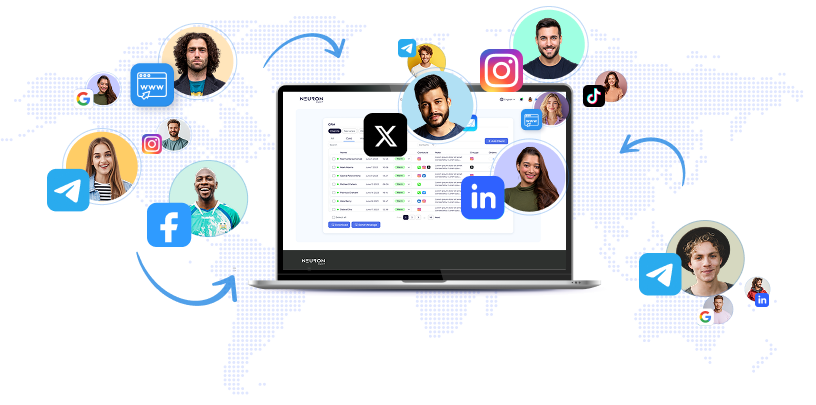
Around 2019, before AI became widespread, C-suite leaders’ main concern was getting sales executives to update CRM systems accurately. Today, that concern has expanded alongside growing tech stacks: leaders now ask about AI sales technology ROI, whether teams fully utilize these tools, and still how to ensure CRM accuracy. The software industry is obsessed with ROI. AI features appear everywhere—in roadmaps, revenue meetings, and LinkedIn posts—promising smoother sales cycles. Yet, sales funnels remain imperfect. This gap between AI’s promises and real commercial results fosters “AI-washing, ” where companies claim AI-driven transformation but workflow and revenue data tell another story. This analysis targets CROs and revenue leaders seeking a practical AI roadmap rather than hype. It contrasts AI sales assistants, agents, and the often-misunderstood AI SDR, emphasizing effectiveness over mere efficiency and practical ways to demonstrate ROI without complex attribution. **Revenue Teams’ Ground Reality: Insights from SaaS Leaders** Revenue leaders note AI penetrates all tools except the buyer’s journey. Despite proliferating AI co-pilots and dashboards, pipeline velocity often stagnates because efficiency without prioritization is superficial. Leaders need fewer steps to decisions, not more “AI-powered” tasks. 1. **Focus on the Task, Not the Vendor** B2B reps and buyers face AI buzzword overload. The best approach is to translate AI claims into clear “jobs to be done. ” - *Assistants* support by pulling in context, summarizing accounts, drafting prep materials—speeding readiness. - *Agents* perform actions like qualifying leads, enriching data, routing, scheduling, updating CRM, and nudging next steps—true workflow orchestration. - *AI SDRs* mimic a sales role mostly via automated prospecting and outreach but cannot replace human judgment in complex sales. Think of AI SDRs as capacity enhancers, not full headcount substitutes. Map AI roles to customer journey stages; if a tool doesn’t sharpen sellers or align with measurable steps, it’s a distraction or experiment. 2. **Effectiveness Outweighs Efficiency** “Giving time back” is common marketing talk, but real revenue growth demands “return on time” — doing the right things, right way, in the right order. Efficiency trims minutes; effectiveness removes bottlenecks such as unqualified inbound leads clogging calendars or stalled proposals. Guidelines include: - Automate “last mile” workflows that directly precede customer actions (bookings, demos, signings) to improve ROI visibility. - Consolidate tech stacks to reduce tool juggling and friction. - Embed AI invisibly in workflows; requiring reps to learn new portals limits adoption. 3. **Measure Real Impact, Not Just “Wow”** Distinguish hype (“AI-powered”) from revenue results (“meetings booked up 47%”). Use a four-metric scorecard: - *Quality*: Human-reviewed accuracy and relevance before wide release. - *Adoption*: Weekly active users and retention; less than 10-20% adoption means failure. - *Efficiency*: Time saved per task, cycle time variability—helpful but secondary. - *Business Impact*: Outcome metrics like response lift, meetings booked, conversion rates. Impact is easier to prove when AI supports immediate, measurable outcomes in outreach. **Common Blind Spots in AI Adoption** - Automating low-value tasks without clear link to revenue wastes effort. - Deploying generic sequences that fail to prepare reps better than buyers’ pre-call research. AI assistants should synthesize contextual insights to inform discovery and sales hypotheses. - Feature confusion arises when users don’t grasp AI tool capabilities, leading to over-ambitious or infeasible demands. Guardrails and clear guidance help users harness AI effectively. **G2’s Analysis: AI SDRs, Assistants, and Agents** ~2000 user reviews reveal: - AI SDRs and assistants are embedded in SMB and mid-market workflows, prized for speed and simplicity.
- Agent builders and business ops platforms target enterprise orchestration and compliance, signaling a maturing agentic AI era. Adoption varies by buyer persona: SMB sellers prioritize rapid lead engagement; enterprise teams seek integrated orchestration with compliance. SaaS companies lead adoption, reflecting their own AI maturity. **Turning AI Ambition into Revenue Reality for CROs** AI is now core to revenue operations, not a side project. An AI-powered sales organization features: - Continuous, automatic data updates across CRM, calls, emails, and web signals—no manual data tidying. - Autonomous “last mile” AI agents handling qualification, routing, scheduling, logging—freeing humans to focus on deal closure. - Seamless customer and seller experiences, with instant answers and fast access to knowledge. - Exponential capacity and buyer-centric engagement unconstrained by headcount or calendar bottlenecks. To operationalize ROI: - Audit every AI tool with “AI in order to ___” to tie features to measurable outcomes. - Automate last-mile workflows first for quickest impact and attribution clarity. - Ensure weekly adoption by sellers to avoid shelfware. - Align roles: assistants drive SMB rep productivity; agents serve enterprise ops. - Prepare for vendor consolidation as AI roles converge and ROI benchmarks clarify. **A 30-Day Sprint Blueprint** - *Week 1*: Conduct “in order to ___” audit; retire tools without measurable outcomes. - *Week 2*: Automate one last-mile workflow (e. g. , speed-to-lead or SDR-to-AE handoff) with human checkpoints. - *Week 3*: Install the four-metric scorecard to monitor quality, adoption, efficiency, and commercial impact. - *Week 4*: Consolidate platforms to two core systems; codify governance on ownership, brand, and privacy. **Is Sales Guilty of AI-Washing?** Sometimes. Many teams adopt AI for efficiency or branding without linking it to buyer journey steps, resulting in theater, not revenue. However, CROs who enforce effectiveness—focusing on last mile automation, mapping AI roles to outcomes, and demanding ROI—turn AI into a true performance lever. The trial is ongoing. Leaders who move beyond AI-washing toward ROI-verified sales workflows will shorten time from intent to decision. Cleaner, simpler sales journeys will outshine empty claims. **FAQs:** 1. *What is AI-washing in sales?* Adopting AI tools superficially, without measurable impact—efficiency theater over real revenue effect. 2. *Differences among AI SDRs, assistants, agents?* Assistants help prep and context; agents act on workflows; AI SDRs automate prospecting but rely on humans for complex sales. 3. *How to measure AI ROI?* Track quality, adoption, efficiency, and direct business impact metrics. 4. *Where is AI adoption fastest?* Strongest in North America, growing in APAC and Europe; India, Australia, and France are promising emerging markets. 5. *How to avoid AI-washing?* Execute the “AI in order to ___” test; automate last-mile tasks; align AI roles to business scale; ensure consistent adoption. In essence, AI’s promise for sales hinges on aligning technology with outcome-driven workflows, prioritizing effectiveness over mere efficiency, and establishing transparent ROI measures. Only then will AI shift from marketing buzzword to a decisive revenue engine. — Edited by Supanna Das
Maximizing AI ROI in Sales: Practical Strategies for Revenue Leaders


The Saudi government is significantly boosting Hollywood-focused AI by leading a $900 million funding round for San Francisco-based Luma AI, a company developing models for entertainment applications.

Over the past year, AI-generated video diffusion models have made remarkable advances in visual realism, demonstrated by models like OpenAI’s Sora 2, Google’s Veo 3, and Runway Gen-4.

New York – The creator economy’s advertising sector is rapidly expanding and evolving, with ad spending soaring from $13.9 billion in 2021 to $29.5 billion in 2024, and forecasts projecting growth to $37 billion soon.

In today’s fast-changing digital environment, the rise of artificial intelligence has profoundly reshaped how brands manage their visibility and online presence.

Nvidia's recent earnings report has drawn significant attention from investors and tech enthusiasts, marking a key milestone in the AI revolution.

At the recent Ignite 2025 conference, Microsoft announced the integration of OpenAI’s advanced video generation model, Sora 2, into Microsoft 365 Copilot, marking a major enhancement to its productivity tools.

At the Nvidia GPU Technology Conference (GTC) 2025, CEO Jensen Huang delivered a keynote outlining a transformative future for artificial intelligence (AI), describing it as reaching a critical "inflection point." Addressing thousands of developers and industry leaders at the event—often dubbed the "Super Bowl of AI"—Nvidia unveiled significant advancements in technology and its vision for AI’s next decade.
Launch your AI-powered team to automate Marketing, Sales & Growth

and get clients on autopilot — from social media and search engines. No ads needed
Begin getting your first leads today